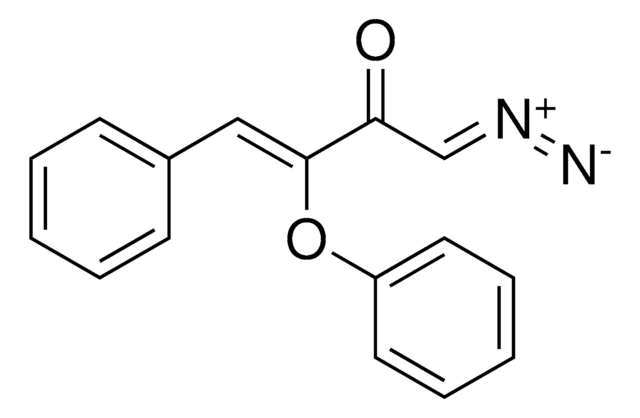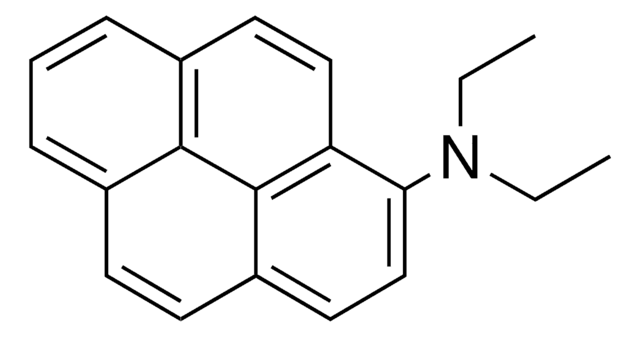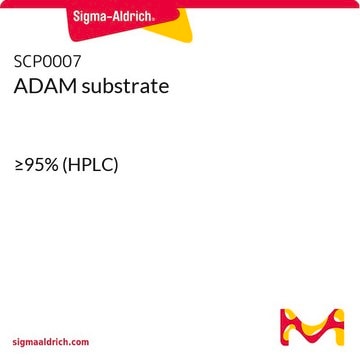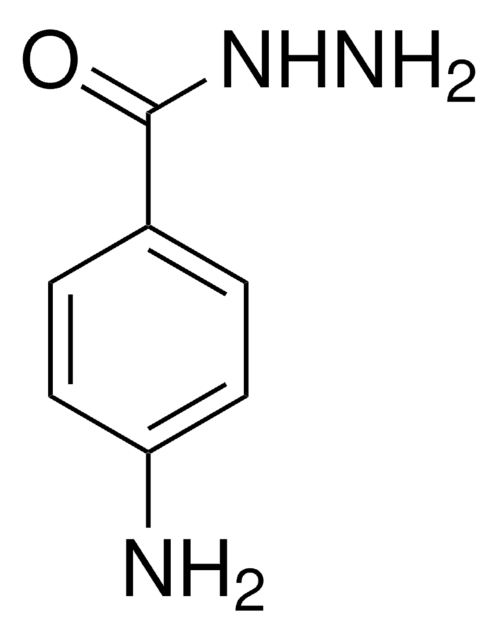P6863
PDAM
≥70% purity (HPLC), for HPLC derivatization, solid
Synonym(e):
1-(Diazomethyl)-pyren, 1-Pyrenyl-diazomethan
About This Item
Empfohlene Produkte
product name
PDAM, for HPLC derivatization
Qualität
for HPLC derivatization
Qualitätsniveau
Assay
≥70% (HPLC)
Form
solid
λmax
338-344 nm
Fluoreszenz
λem 371-379 nm
Anwendung(en)
diagnostic assay manufacturing
hematology
histology
Versandbedingung
dry ice
Lagertemp.
−20°C
SMILES String
[N-]=[N+]=Cc1ccc2ccc3cccc4ccc1c2c34
InChI
1S/C17H10N2/c18-19-10-14-7-6-13-5-4-11-2-1-3-12-8-9-15(14)17(13)16(11)12/h1-10H
InChIKey
PEIBAWRLFPGPAT-UHFFFAOYSA-N
Anwendung
Lagerklassenschlüssel
11 - Combustible Solids
WGK
WGK 3
Flammpunkt (°F)
Not applicable
Flammpunkt (°C)
Not applicable
Persönliche Schutzausrüstung
Eyeshields, Gloves, type N95 (US)
Choose from one of the most recent versions:
Analysenzertifikate (COA)
Don't see the Right Version?
If you require a particular version, you can look up a specific certificate by the Lot or Batch number.
Besitzen Sie dieses Produkt bereits?
In der Dokumentenbibliothek finden Sie die Dokumentation zu den Produkten, die Sie kürzlich erworben haben.
Unser Team von Wissenschaftlern verfügt über Erfahrung in allen Forschungsbereichen einschließlich Life Science, Materialwissenschaften, chemischer Synthese, Chromatographie, Analytik und vielen mehr..
Setzen Sie sich mit dem technischen Dienst in Verbindung.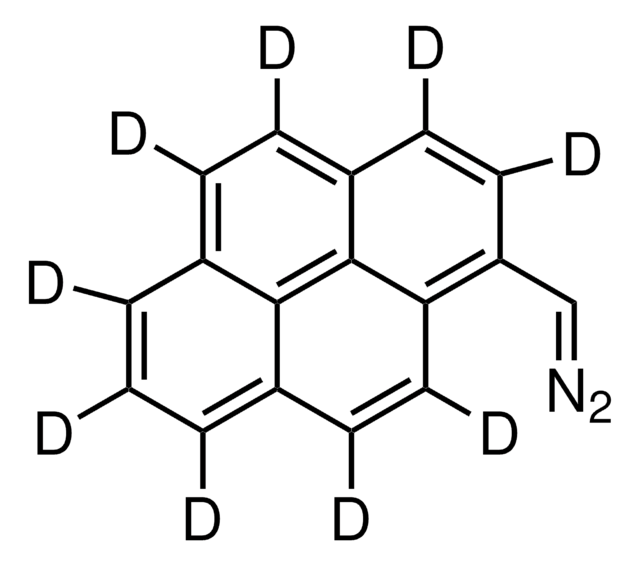

![Benzo[k]fluoranthen for fluorescence, ≥99%](/deepweb/assets/sigmaaldrich/product/structures/277/320/3e615f9f-3887-40f6-b176-bc1eb9b4832c/640/3e615f9f-3887-40f6-b176-bc1eb9b4832c.png)
